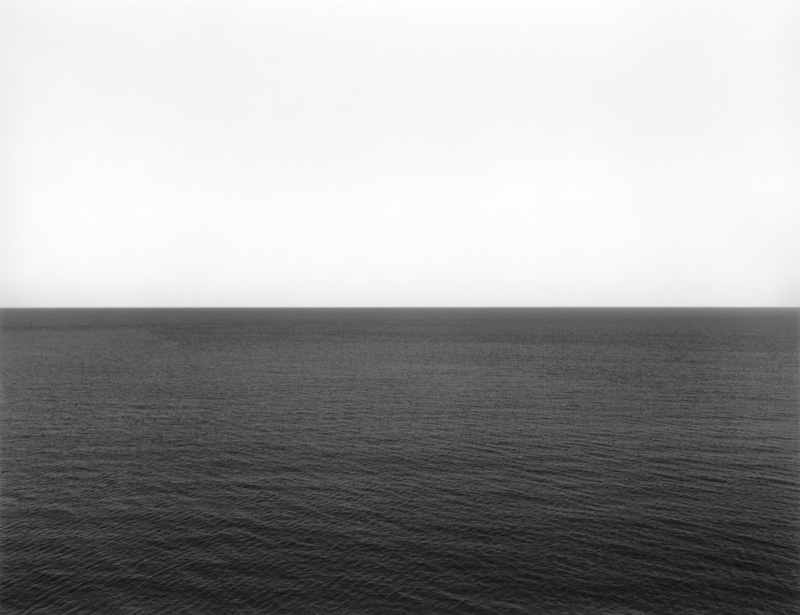
Endless seas
The ‘Seascapes’ of Japanese artist Hiroshi Sugimoto (b. 1948) are basically quite simple. One by one they show a calm sea, in black and white, without people, and with a horizon just above the middle. At first glance there are no natural features to distinguish changes in location. Only the weather conditions, available light, the different times of day or night, and the waves give us an indication. We could consider those various seas as portraits of different faces of infinity. The result is almost indescribable, the impressive sceneries knock you down. Sugimoto manages to push this familiar landscape on to great heights. First, he brings it back to its essence, two surfaces with a dividing line. Then he prints it with so much feeling for nuance and light and detail, that he lifts this seemingly mundane reality with a big sweep. This way Sugimoto transforms the sea to its essence of light, space and infinity – an eternal image, where time stands still and you can forget about everything around you. His photographs are also about the sublime, evoke uncontrollable emotions. It might not come as a surprise that Sugimoto even made a ‘Seascape’ by the sea at Rugen, where Romantic artist Caspar David Friedrich returned each time to paint. The infinite view of the sea and the feeling it elicits are beyond words.
Sugimoto uses photography to test the nature of reality itself. His series of works – Theaters (1976-ongoing); Lightning Fields (2006-ongoing); Dioramas (1976-2012); Portraits (1994-1999); and Seascapes (1980-ongoing) – question the parameters of history, time, culture, nature, and belief. He attempts to lead us towards a more precise appreciation of both the possibilities and limits of perception and understanding.
The artist states that the photograph is a blank screen upon which the viewer is able to project his or her impressions and desires. But we can conclude that it is also a more assertive expression of the artist’s own sensibility and ideas. A voyage of seeing.
